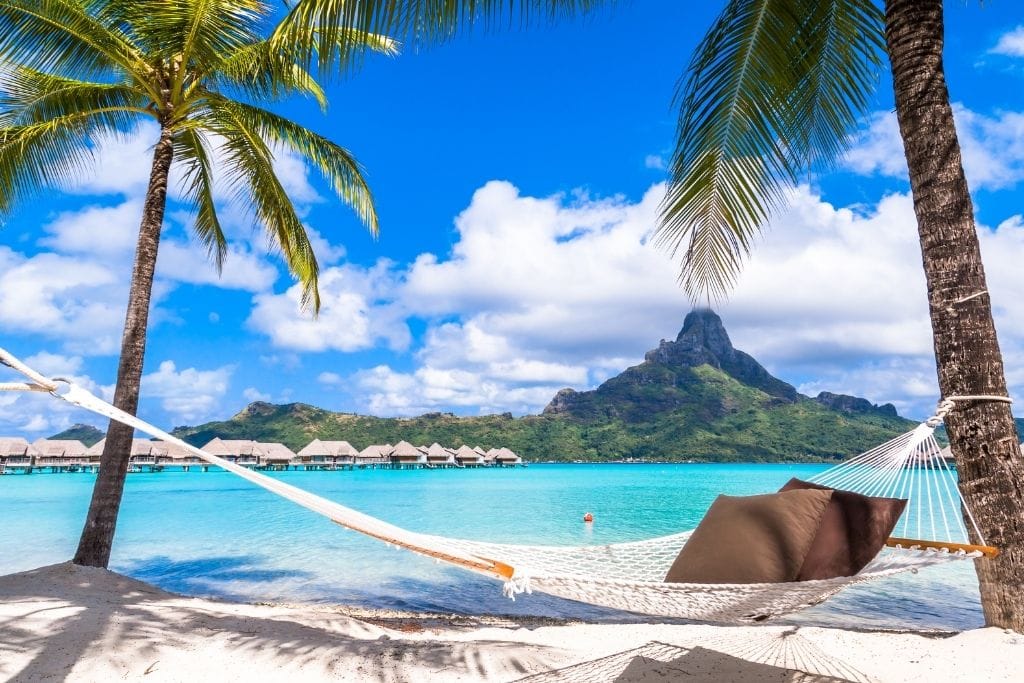Exotic places to vacation beckon with the promise of adventure and discovery. This guide delves into the multifaceted concept of “exotic,” exploring diverse interpretations and showcasing unique destinations across the globe. We’ll examine the cultural immersion opportunities, thrilling activities, and practical considerations involved in planning an unforgettable trip to these less-traveled corners of the world, ultimately aiming to inspire your next extraordinary journey.
From the breathtaking landscapes of Patagonia to the vibrant cultures of Southeast Asia, we’ll unravel the allure of exotic travel. We will navigate the complexities of visa requirements, health precautions, and sustainable tourism practices, equipping you with the knowledge and confidence to plan a responsible and rewarding adventure. Prepare to be captivated by the stunning visuals, sensory experiences, and unique cultural encounters that await in these remarkable locations.
Defining “Exotic”
The term “exotic” is inherently subjective, its meaning shaped by individual experiences, cultural backgrounds, and geographical location. What one person considers exotic, another might find commonplace. This inherent variability makes defining “exotic” destinations a fascinating exploration of cultural perceptions and personal preferences.
The perception of “exotic” often stems from a sense of difference or otherness. It implies a departure from the familiar, a journey into the unknown, and an encounter with cultures, landscapes, or lifestyles markedly different from one’s own. This “otherness” can be alluring, evoking a sense of adventure and discovery, or it can be unsettling, triggering feelings of discomfort or unease.
Geographic and Demographic Variations in the Perception of Exotic Destinations
The perception of exotic locations is heavily influenced by geographical origin and demographic factors. For example, a resident of a bustling metropolis might find a remote rural village “exotic,” while someone from a rural area might find the same place quite ordinary. Similarly, someone from a Western culture might perceive a Southeast Asian country as exotic, while a person from Southeast Asia might find it perfectly familiar. Age, socioeconomic status, and travel experience also play significant roles in shaping individual perceptions. A seasoned traveler may have a more nuanced and less romanticized view of an exotic destination than someone experiencing international travel for the first time.
Comparative Interpretations of “Exotic” Destinations
| Definition | Geographic Example | Cultural Aspects | Tourist Perception |
|---|---|---|---|
| Unfamiliar and intriguing landscapes | The Amazon Rainforest | Indigenous cultures, unique biodiversity | Adventure, exploration, connection with nature |
| Distinctive and vibrant cultures | Marrakech, Morocco | Rich history, bustling souks, distinct architecture | Immersion in a different way of life, sensory overload |
| Remote and untouched locations | The Galapagos Islands | Unique wildlife, pristine environment | Escape from modern life, unparalleled wildlife encounters |
| Luxury and exclusivity | The Maldives | High-end resorts, pristine beaches | Relaxation, indulgence, privacy |
Adventure and Activities
Exotic destinations offer a plethora of unique adventure activities beyond the typical tourist experiences. These activities often provide unparalleled opportunities for personal growth, exploration, and connection with nature, but it’s crucial to consider the ecological impact of such tourism. Responsible travel is paramount to preserving these fragile environments for future generations.
Unique Adventure Activities in Exotic Locations
Several exotic locations provide exceptional opportunities for adventure. The following examples highlight the diversity of experiences available.
- Amazon Rainforest, South America: Jungle trekking, wildlife spotting (including jaguars, monkeys, and various bird species), and piranha fishing offer immersive experiences within this biodiversity hotspot. Navigating the intricate river systems by canoe is another popular activity.
- Himalayan Mountains, Nepal: Trekking to Everest Base Camp is a classic adventure, demanding physical endurance and acclimatization. White-water rafting on the rivers that carve through the Himalayas provides a thrilling alternative.
- Serengeti National Park, Tanzania: Hot air balloon safaris offer breathtaking views of the vast plains and the incredible wildlife migrations. Game drives allow for closer encounters with lions, elephants, and other iconic African animals.
- Raja Ampat Islands, Indonesia: Scuba diving and snorkeling in Raja Ampat reveal unparalleled marine biodiversity. The sheer variety of coral reefs, fish species, and other marine life makes it a world-renowned diving destination.
Ecological Impact of Tourism in Exotic Destinations
The increasing popularity of exotic travel destinations presents both opportunities and challenges for environmental conservation. Unsustainable tourism practices can significantly damage fragile ecosystems.
- The Galapagos Islands, Ecuador: The unique flora and fauna of the Galapagos Islands are highly vulnerable to human impact. Over-tourism can lead to habitat destruction, pollution (both water and air), and the introduction of invasive species, threatening the delicate balance of the ecosystem. Responsible tourism initiatives, such as limiting visitor numbers and strictly enforcing environmental regulations, are crucial for preserving this natural wonder.
- The Great Barrier Reef, Australia: Coral bleaching events, exacerbated by climate change, are a major threat to the Great Barrier Reef. Tourism, while providing economic benefits, can contribute to reef damage through pollution from boats, sunscreen chemicals, and physical damage from careless tourists. Sustainable tourism practices, such as promoting eco-friendly sunscreens and reducing boat traffic in sensitive areas, are essential for mitigating these impacts. Furthermore, supporting organizations dedicated to reef restoration and research is crucial.
Adventure Itinerary: Trekking in the Himalayas (Nepal)
This itinerary focuses on a moderate-difficulty trek in the Annapurna region of Nepal, known for its stunning scenery and diverse flora and fauna.
Duration: 10 days
Accommodation: Tea houses along the trekking route (basic but comfortable) and a hotel in Kathmandu upon arrival and departure.
Activities:
- Day 1-2: Arrival in Kathmandu, acclimatization, and preparation for the trek.
- Day 3-4: Trek to Tikhedhunga, enjoying scenic views and acclimatizing to the altitude.
- Day 5-7: Trek to Ghorepani, exploring rhododendron forests and enjoying panoramic views of the Annapurna range. Sunrise views from Poon Hill are a highlight.
- Day 8-9: Trek back down to Nayapul, experiencing the changing landscapes.
- Day 10: Departure from Pokhara or Kathmandu.
Visual Representation
The visual appeal of exotic locations is multifaceted, encompassing a breathtaking interplay of light, color, and texture that profoundly impacts the sensory experience. These elements combine to create an atmosphere unique to each destination, leaving an indelible mark on the traveler’s memory. Analyzing a specific location allows us to appreciate the power of these visual components in shaping our perception of the exotic.
We will examine the visual splendor of the Sahara Desert at sunrise. The interplay of light, color, and texture in this environment creates a truly unforgettable spectacle.
Sahara Desert Sunrise: Light, Color, and Texture
The pre-dawn Sahara is a canvas of deep indigo, gradually yielding to hues of violet and rose as the sun begins its ascent. The light, initially soft and diffused, gradually intensifies, casting long, dramatic shadows from the towering dunes. The color palette is breathtaking: the sand, ranging from pale apricot to deep ochre, reflects the rising sun’s warm glow. The textures are equally diverse, from the fine, almost powdery sand that slips through the fingers to the coarse, wind-sculpted surfaces of the dunes themselves, their surfaces etched with intricate patterns. The play of light and shadow accentuates these textures, highlighting the ripples and curves sculpted by centuries of wind. The stark, minimalist landscape, devoid of vegetation except for occasional hardy shrubs, enhances the impact of the colors and textures.
Sensory Experience of the Sahara Desert
The Sahara’s sensory experience is equally compelling. The sounds are minimal, dominated by the whisper of the wind as it moves across the vast expanse of sand, punctuated occasionally by the cry of a distant bird or the crunch of sand underfoot. The smells are earthy and subtly spicy, a blend of dry sand and the faint scent of desert flora. The tactile experience is varied, ranging from the soft, yielding sand to the rough, sometimes scorching, surfaces of sun-baked rocks. The air itself holds a unique quality, dry and crisp, carrying the faint scent of distant oases. The intense heat of the day is palpable, a tangible element of the environment.
Atmospheric Narrative: Sahara Desert Sunrise
Imagine waking before dawn in the heart of the Sahara. The air is cool, carrying the promise of a day of intense heat. The sky is a deep, inky blue, gradually lightening to a soft violet as the first hints of dawn appear on the horizon. The dunes, colossal waves of sand, stand silhouetted against the brightening sky, their textures rendered almost ethereal in the soft light. As the sun finally crests the horizon, a breathtaking explosion of color unfolds. The sand glows with an incandescent warmth, the sky ablaze with a fiery orange and rose. The air shimmers with heat, the silence broken only by the gentle sigh of the wind. This is the Sahara at sunrise: a spectacle of light, color, and texture, a sensory experience that transcends description.
Final Thoughts
Ultimately, the pursuit of exotic vacations is a journey of self-discovery, cultural understanding, and environmental stewardship. By carefully considering the practical aspects of travel alongside the allure of unique experiences, we can ensure that our adventures leave a positive impact on both ourselves and the destinations we explore. Embrace the unexpected, respect local cultures, and embark on your own unforgettable journey to discover the world’s hidden gems.




